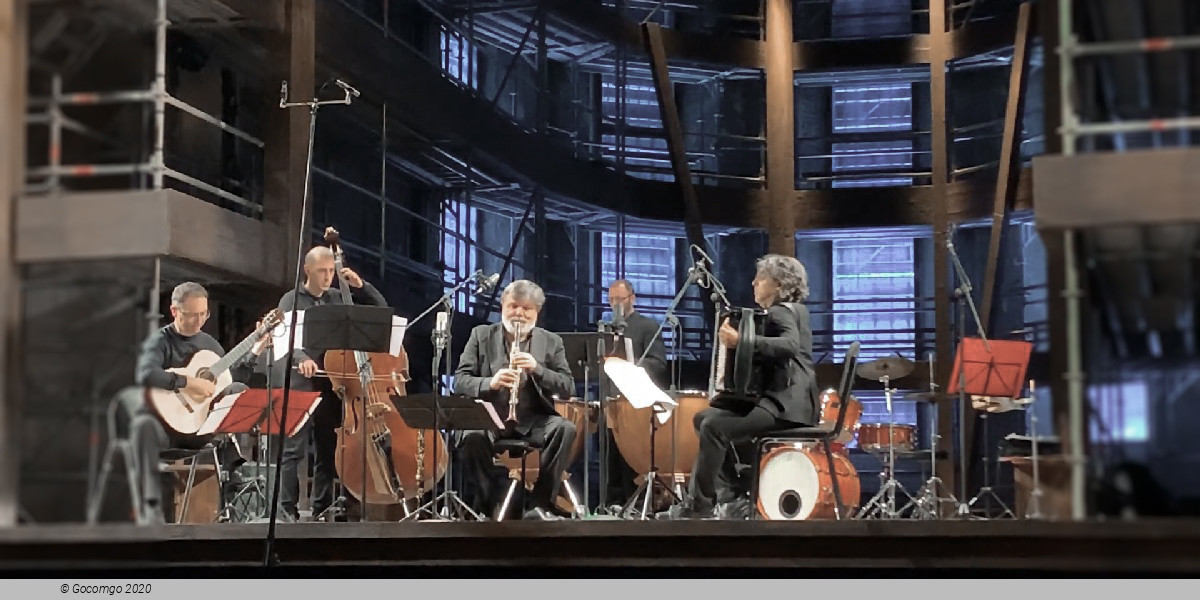Chiesa di San Francesco del Prato (Parma, Italy)
Chiesa di San Francesco del Prato

The Church of San Francesco del Prato is a gothic church located in the historic center of Parma.
History
Origin
The first seat of the Franciscans in Parma, it was built in the thirteenth century thanks to the spontaneous individual contributions of the population, who donated materials and labor. In the following centuries became one of the most important churches of the city, so much so that the most prestigious noble families chose it as their place of burial; among these are the family Arcimboldi, the Third, the Reds, the Sanvitale, the marquis Meli Lupi and the Aldighieri. In this convent, significant figures such as fra' Salimbene DE Adam, one of the leading chroniclers of the Middle Ages, and blessed Giovanni Buralli, Minister General of the order (1247-1257) were initiated into the Franciscan religious life. It soon became the seat of a general Studium of the minor order and this continued to be even when, with the division of the order, it remained to the minor Friars of Conventual tradition. In fact, the famous scotist theologian Bartolomeo Mastri from Meldola, OFMConv, also taught there. Venerable Father Lino Maupas, although from the observant Convent of the Annunziata, lived here and operated during the period when the building was no longer a convent but a prison.
Considerable attention was given during construction and design, to the symbolic numerology and the position of the church in relation to the city. If you join the main monasteries built in the middle of the XIII century, you can clearly see that their construction is not at all accidental, but rather, they form a perfect golden rectangle. In addition, if you join with a theoretical line, the Fresco located inside the baptistery of Parma representing san Francesco, with the center of the baptistery itself, and you extend this line also outside the baptistery, the line comes exactly in front of the entrance of San Francesco Del Prato.
The Rosette, the work of Master Alberto Da Verona, was made in 1461 and its diameter, net of the Terracotta frame is equal to a parmesan perch, that is 3.27 meters. It consists of 16 Rays, a number that for medieval occultists represented the House of God.
From 1800 to today
Following the Napoleonic suppressions in 1800, the church became the city prison until 1993. This distorted its historical-monumental character: new rectangular windows were opened, destroying the ancient pronaos and covered the Gothic frescoes with gray paint, which partly preserved them. At the centre of the apse, for instance, was found a fresco depicting Christ Pantocrator attributed to Bernardino Grossi (to whom are also attributed the chapels Valeri and Ravacaldi inside the cathedral) and his pupil and son-in-law Jacopo Loschi. The church, whose length exceeds that of the cathedral, was divided into sectors and various floors, in such a way as to accommodate the prison cells and a joinery in the central nave. The bell tower was transformed to accommodate penalty cells. In one of these is the cell that housed Gaetano Bresci, the regicide of King Umberto I of Savoy. The cell of Parma Giovannino Guareschi was inside the former convent. the orientation of the building is very particular, whose apse is oriented towards the Rising Sun of December 22, Winter Solstice, while the rosette is oriented so as to bring in the sun rays of the sunset of the summer solstice. The rosette itself lends itself to various mystical and esoteric interpretations and contributes to the creation of the very particular light inside the monument. Currently, through an ongoing renovation, we are trying to restore the artifact to its proper historical and aesthetic value and to reopen it to worship by the end of 2020.
Description
The central portal was enriched by a vestibule of white marble, consisting of two small columns supporting an arch that in turn supported a hexagonal cusp Spire. The overhang was richly decorated, and in the center was a high relief representing Christ. In 1810 the vestibule was removed and the door was walled, as was the other two side portals. At the same time, 16 square windows were opened in the facade to give light to prison environments.
In 1478 the sum necessary for the construction of a wooden choir for the church was donated to the will by Filippo Da Enzola. It had to be entirely inlaid, and show perspective views of ancient Parma. We can make an idea by looking at the stalls of the choir of the Church of Sant'uldarico that were later built taking as an example those of San Francesco Del Prato. In 1808 the choir was dismantled by Napoleonic troops and abandoned outside. We do not know its fate, but we can assume that it has been completely lost.
Even of the organ is no longer known, it can be assumed that it may have been transferred to a church in the province. Dislocation of the pulpit is also unknown. It was located on the third column, so that it could be visible to all the faithful. Some of the paintings were eventually saved, ending up in the Church of the Holy Trinity Old, or at the National Gallery of Parma. Many others are dispersed or destroyed.


